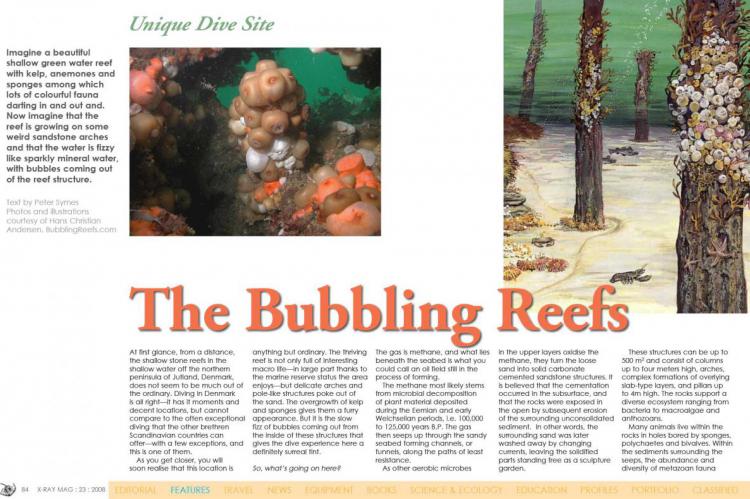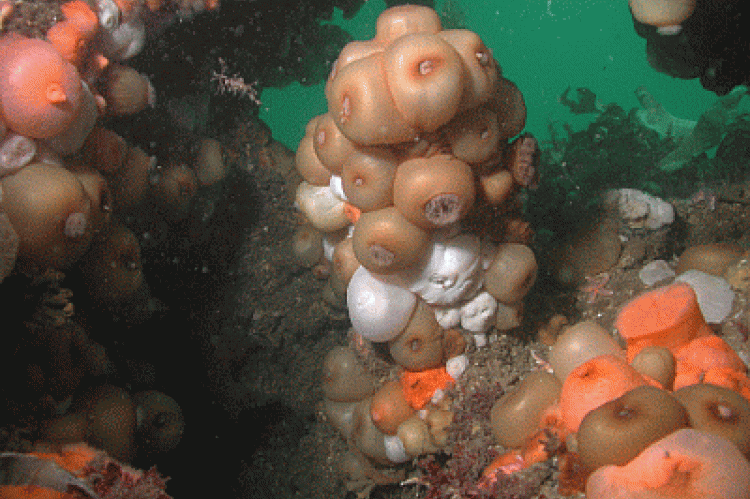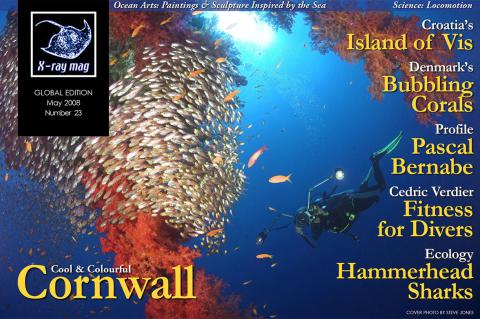The Bubbling Reefs
Imagine a beautiful shallow green water reef with kelp, anemones and sponges among which lots of colourful fauna darting in and out and. Now imagine that the reef is growing on some weird sandstone arches and that the water is fizzy like sparkly mineral water, with bubbles coming out of the reef structure.
Tags & Taxonomy
As you get closer, you will soon realise that this location is anything but ordinary. The thriving reef is not only full of interesting macro life—in large part thanks to the marine reserve status the area enjoys—but delicate arches and pole-like structures poke out of the sand. The overgrowth of kelp and sponges gives them a furry appearance. But it is the slow fizz of bubbles coming out from the inside of these structures that gives the dive experience here a definitely surreal tint.
So, what’s going on here?
The gas is methane, and what lies beneath the seabed is what you could call an oil field still in the process of forming.
The methane most likely stems from microbial decomposition of plant material deposited during the Eemian and early Weichselian periods, i.e. 100,000 to 125,000 years B.P. The gas then seeps up through the sandy seabed forming channels, or funnels, along the paths of least resistance.
As other aerobic microbes in the upper layers oxidise the methane, they turn the loose sand into solid carbonate cemented sandstone structures. It is believed that the cementation occurred in the subsurface, and that the rocks were exposed in the open by subsequent erosion of the surrounding unconsolidated sediment. In other words, the surrounding sand was later washed away by changing currents, leaving the solidified parts standing free as a sculpture garden.
These structures can be up to 500 m2 and consist of columns up to four meters high, arches, complex formations of overlying slab-type layers, and pillars up to 4m high. The rocks support a diverse ecosystem ranging from bacteria to macroalgae and anthozoans.
Many animals live within the rocks in holes bored by sponges, polychaetes and bivalves. Within the sediments surrounding the seeps, the abundance and diversity of metazoan fauna ...
(...)
Download the full article ⬇︎

Originally published
X-Ray Mag #23
In X-RAY MAG issue #23, Mark Webster takes on a tour through the fascinating underwater world off Cornwall, England. We talk with Pascal Bernabé for insights into his achievements in deep diving. Science editor, Michael Symes, investigates locomotion of sea creatures, and we look at Hammerhead sharks and their unique head shape. Harald Apelt brings us to another pearl in the Mediterranean -- beautiful, historic Croatia. Kurt Amsler discusses proper workflow in digital photography. Rebreather pro, Cedric Verdier, gets us up to speed on physical fitness for divers and DIR for rebreather divers. Girldiver Cindy Ross discusses sunscreen and gives us the skinny on sunrays and skin cancer. We meet the Bubbling Reefs of Denmark, and a diverse portfolio of ocean art from artists around the world tops it all off. Plus the news -- on marine ecology, discoveries, ship wrecks, conservation, equipment, travel, divers, record breakers, books and films, turtles, sharks, whales, jellyfish and more...






























